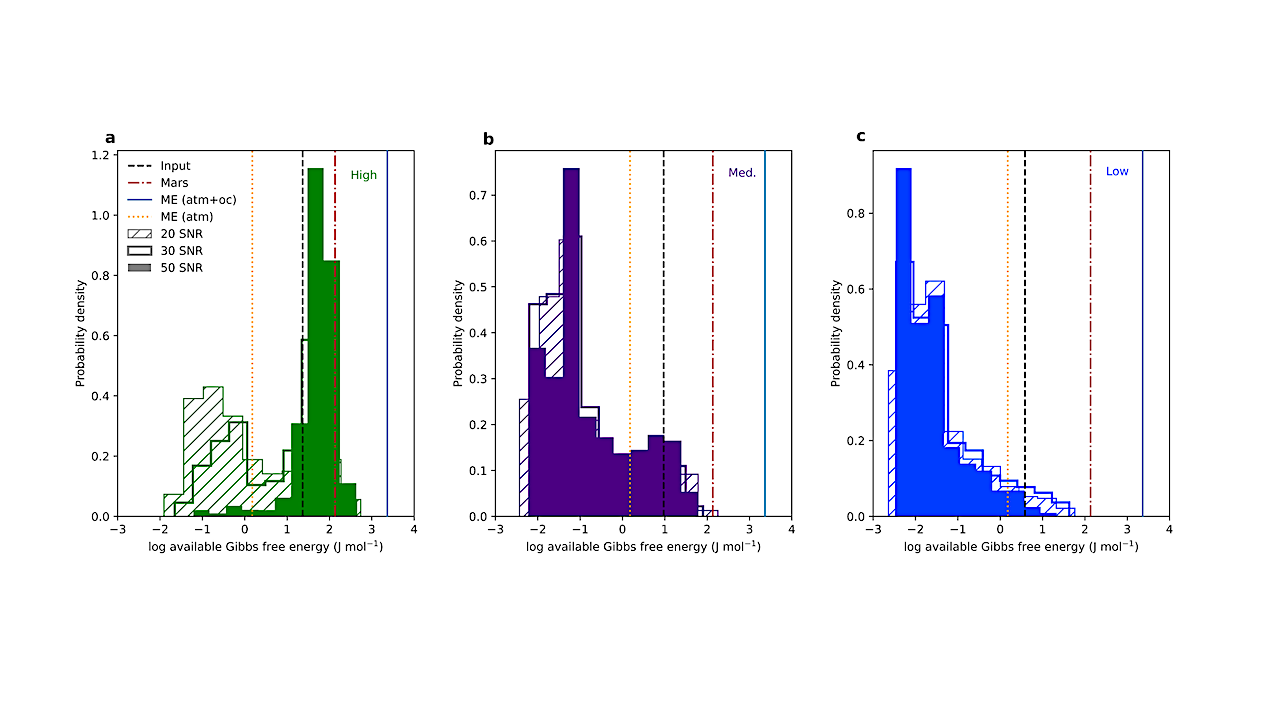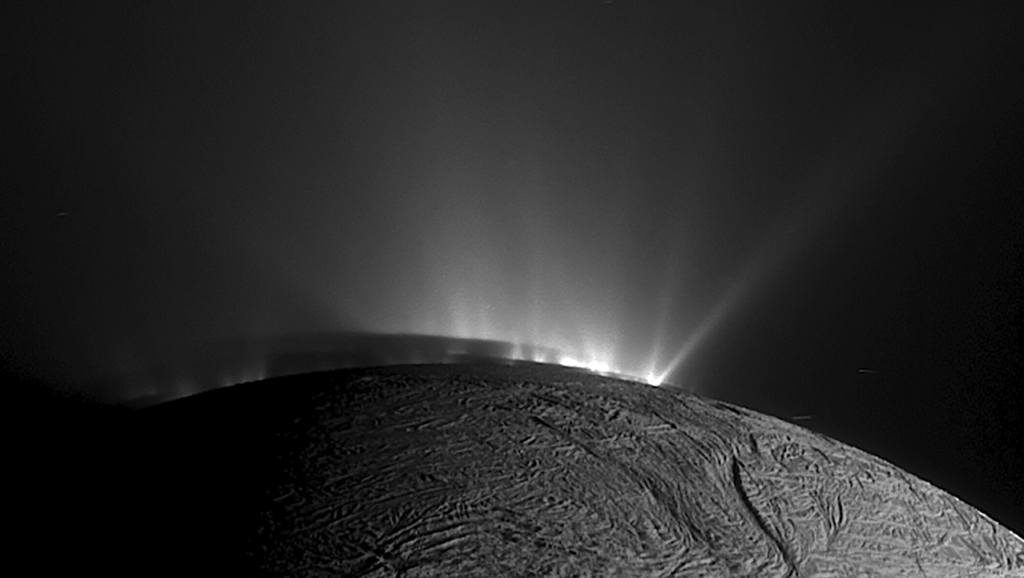Inferring Chemical Disequilibrium Biosignatures for Proterozoic Earth-Like Exoplanets

Chemical disequilibrium quantified via available free energy has previously been proposed as a potential biosignature. However, exoplanet biosignature remote sensing work has not yet investigated how observational uncertainties impact the ability to infer a life-generated available free energy.
We pair an atmospheric retrieval tool to a thermodynamics model to assess the detectability of chemical disequilibrium signatures of Earth-like exoplanets, emphasizing the Proterozoic Eon where atmospheric abundances of oxygen-methane disequilibrium pairs may have been relatively high. Retrieval model studies applied across a range of gas abundances revealed that order-of-magnitude constraints on disequilibrium energy are achieved with simulated reflected-light observations at the high abundance scenario and signal-to-noise ratios (50) while weak constraints are found at moderate SNRs (20\,–\,30) for med\,–\,low abundance cases.
Furthermore, the disequilibrium energy constraints are improved by modest thermal information encoded in water vapor opacities at optical and near-infrared wavelengths. These results highlight how remotely detecting chemical disequilibrium biosignatures can be a useful and metabolism-agnostic approach to biosignature detection.
Amber V. Young, Tyler D. Robinson, Joshua Krissansen-Totton, Edward W. Schwieterman, Nicholas F. Wogan, Michael J. Way, Linda E. Sohl, Giada N. Arney, Christopher T. Reinhard, Michael R. Line, David C. Catling, James D. Windsor
Comments: Nature Astronomy. Supplementary information see this https URL For Source Data see this https URL
Subjects: Earth and Planetary Astrophysics (astro-ph.EP)
Cite as: arXiv:2311.06083 [astro-ph.EP] (or arXiv:2311.06083v1 [astro-ph.EP] for this version)
https://doi.org/10.48550/arXiv.2311.06083
Focus to learn more
Submission history
From: Amber Young
[v1] Fri, 10 Nov 2023 14:30:06 UTC (331 KB)
https://arxiv.org/abs/2311.06083
Astrobiology








